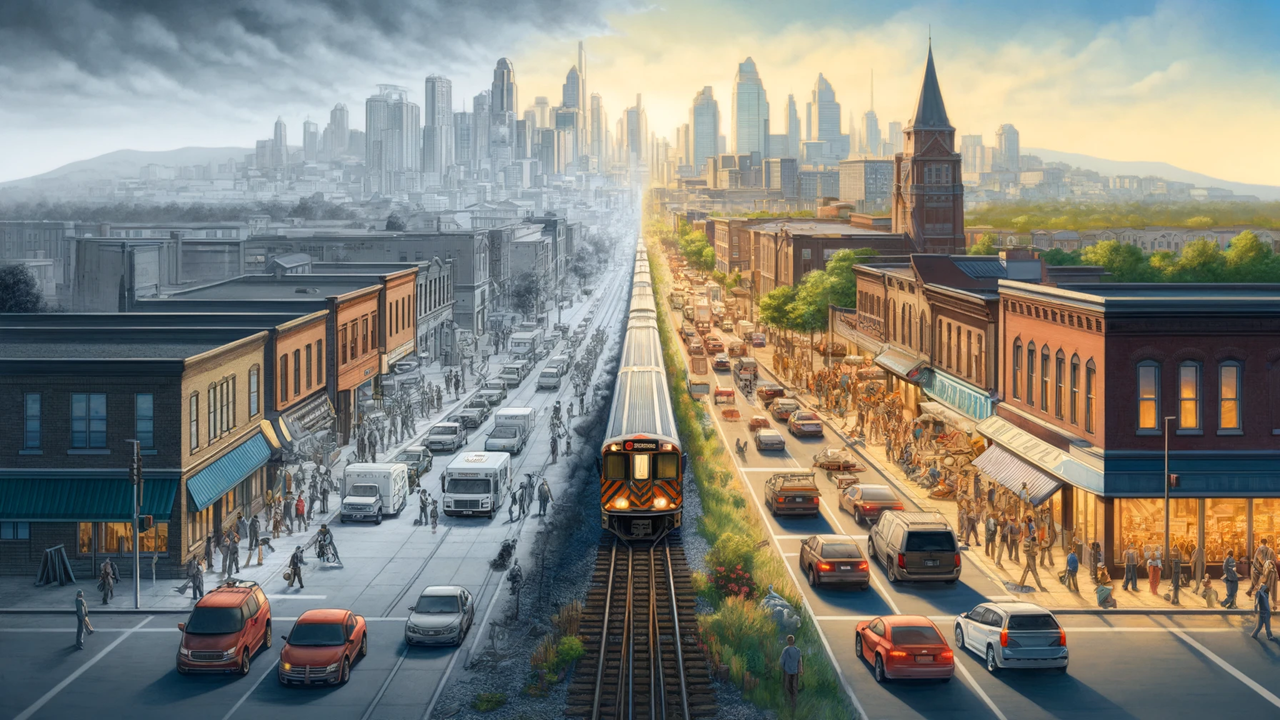Tracks of Change: Assessing the Social Impact of Urban Rail in America
This article explores the impact and efficiency of urban rail systems in the U.S., emphasizing their role in enhancing social welfare despite financial deficits and a declining share of urban travelers. It discusses the environmental, economic, and social benefits of urban rail, along with strategies for addressing its challenges.

Urban rail systems are integral to the infrastructure of many American cities, providing millions of people with an alternative to car travel every day. Despite facing financial deficits and a declining share of urban travelers, these systems play a crucial role in promoting social welfare and sustainable urban development. The study "Tracks of Change: Assessing the Social Impact of Urban Rail in America" dives into the efficiency and impact of these transit systems, exploring their benefits and challenges in the context of modern urban mobility.
Urban Rail Systems: A Dual-edged Sword
Urban rail transit systems, including subways, light rail, and commuter trains, are designed to serve densely populated areas, offering a reliable alternative to road-based transportation. These systems are praised for reducing traffic congestion, lowering greenhouse gas emissions, and providing affordable mobility options. However, they often operate at a financial loss, subsidized by public funds, and have seen a gradual decline in ridership percentages relative to other modes of transportation.
Evaluating the Efficiency of Urban Rail
Efficiency in public transit is not solely about profitability or ridership numbers; it's about the value these systems add to urban life. The study evaluates efficiency through multiple lenses:
- Environmental Impact: Urban rail systems significantly reduce per-capita emissions by cutting down on individual car use.
- Economic Contributions: Despite their operational deficits, these systems support local economies by improving access to jobs and stimulating economic activities in connected areas.
- Social Equity: Urban rail is essential for many low-income households that rely on affordable public transport to access essential services and employment opportunities.
The Declining Share of Urban Travelers
The decline in urban rail ridership is attributed to several factors, including the rise of ride-sharing services, changes in work patterns like increased remote work, and underinvestment in system improvements. This trend poses challenges for urban planners and transit authorities, who must balance the need for comprehensive service with fiscal sustainability.
Urban Rail and Social Welfare
The social desirability of urban rail systems is profound. They are more than just transport; they are lifelines for many urban residents:
- Accessibility: Rail systems enhance accessibility to key urban areas, promoting inclusivity by connecting diverse neighborhoods.
- Quality of Life: By reducing traffic congestion and travel times, they improve the overall quality of life for city residents.
- Public Health: Reduced car dependence helps lower urban air pollution, contributing to better public health outcomes.
Challenges Facing Urban Rail Systems
The financial sustainability of urban rail is a pressing issue. Operating deficits require either public subsidies or fare increases, each of which comes with its own set of economic and political challenges. Additionally, maintaining and upgrading aging infrastructure to meet modern safety and efficiency standards requires significant investment.
Strategies for Revitalization
To tackle these issues, the research outlines a number of strategies:
- Investment in Technology: Implementing advanced technologies can improve operational efficiency and attract more riders by enhancing the user experience.
- Integrated Mobility Solutions: Creating synergies with other modes of urban transport, such as buses and bike-share programs, can provide a seamless travel experience, increasing overall system utilization.
- Public-Private Partnerships: Leveraging partnerships with private entities can bring in investment and innovation without solely relying on public funds.
Conclusion
Urban rail systems are pivotal in shaping sustainable, equitable, and livable urban environments. While they face significant challenges, particularly in terms of financial viability and adapting to changing urban dynamics, their benefits in social welfare and environmental impact remain undeniable. With strategic investments and innovative management, these systems can continue to serve as the backbone of urban transit and an engine for social and economic development.










